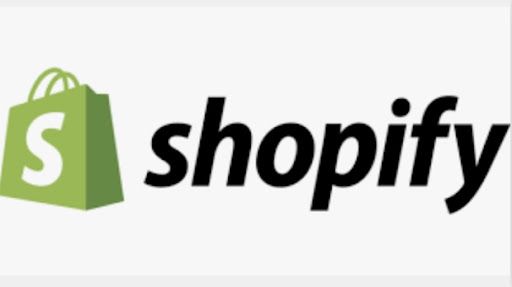We come from a world where services were purchased on perpetual license, a one-time fee that included maintenance. Today, we’ve moved into subscription models that are sold both to businesses and individuals.
In the present day, FinTech companies are growing tremendously, and we’ve seen them really become integrated with SaaS in general. The potential for Fintech within the SaaS model is limitless, and in this article we’re going to explore how the two can evolve together.
Here’s a breakdown of our agenda:
- Successful fintech platforms
- The modern landscape
- The future of financial services
- Banking and SaaS: a new ecosystem emerging
- A new financial landscape
Before we dive into this article, let’s look at a how some fintech platforms are thriving in the current landscape.
Successful FinTech platforms
These products typically deal in traditional card payments, loans, bank accounts, and benefits. Here are some examples of organizations that have successfully embedded this technology into their platform.
Shopify

Shopify have recently decided to open up capital based on their insights that they have on their clients. The company’s processing transactions on behalf of the merchants that they represent. They have proposed that a merchant can use his transactions or sales to pay off a loan that they might need in order to continue running his services.
Stripe

Stripe is really an interesting one to look at because they really tie themselves into what they call ‘the point of need.’ That means that they’re essentially there whenever a customer might need a loan.
When you’re at the point of sale, and you're short of balance, they allow you to opt in for a ‘micro loan’ loan with various installments and payments.
Epic games
Then we have a rather unusual example in ‘Epic games.’
This is kind of a non-fintech example that has nonetheless embraced similar technology. You may have heard about their struggles with Apple's app store policy. They just decided to build the tight policies that Apple put on them and take over the embedded payment process themselves.
What we can learn from this
The key takeaway is that we’re seeing embedded finance grow tremendously across many different platforms. The examples I've shown have barely scratched the surface of how fast this can go.
It’s been estimated that if SaaS businesses embed financial services at the point of need, or just as a part of the composition of their service, their revenues can grow by two to five times.
We've also seen that, through this kind of embedded checkout process, eCommerce merchants have seen conversion increase by around 50%. If people really want to buy something but they’re not sure if they have the funds, they can very quickly get a loan and drive conversions up.
The modern landscape
There’s a huge opportunity here to make financial services both more customizable and invisible. Merchants are more likely to drive up conversions if the transaction process happens more quickly, with less hassle and configuration for the client.
If you look at the US market, the big tech platforms last year did around $3.4 trillion in terms of revenue and market value. The use cases of embedded finance ranging from insurance to payments, lending cards, to micro-loans all have tremendous potential for growth
But I’m going to argue that there’s potentially a new market that no one has tapped into yet. This is the new, exciting market of incremental revenue.

Incremental revenue
If you look at SaaS business segments, we have horizontal, or more generic solution verticals. But the reason why we see verticals growing fast in the modern age is because they have strong access to micro segments.
These are areas where you need a more customized or specific financial solution that’s too complex for banks to deal with. They’re mostly what’s calle ‘fit for purpose’ software solutions, where the clients are quite ‘sticky.’
That means that most of the customer base of a company who uses the vertical SaaS solution will consolidate needs or emerging needs. Customers like to stick to that one vendor who serves them best.
New models emerging
So there are a variety of models emerging in the FinTech space. But there are three major models that I want to draw your attention to.

The traditional model
Many people are more familiar with the more traditional model that platforms like PayPal use. PayPal are embedded into eCommerce sites, and they take over the payment process entirely.
With Paypal, a percentage of the customer’s fees will go to PayPal. Added to that, the process might not be as attractive to clients, since having to go through another party when making a transaction generally slows the process down. This moves the transaction further away from that essential point of need.
The resale model
A client might be looking to take out a loan, and you might pass them through a service such as LendingClub to handle the loan.
This is a referral solution, and it’s not quite as ‘invisible’ as you might be looking for in order to make client’s stick to your product. It’s not entirely hassle-free as client’s have to deal with a third party to get what they need.
The embedded solutions model
This is definitely the preferred solution to attract a new audience. The more embedded your financial solutions can be into the customer journey, the more likely customers are to stick to you. It’s all about aligning the solution to the point of need.

The future of financial services
Let’s look again at how Epic Games implemented financial services. In taking over the entire payment process, there’s a big drawback in that the risk profile goes up. You become responsible for getting the payments going in and the payment collection part.
The incredible benefits and some drawbacks
These companies that are taking over the entire process are sitting on a tremendous amount of data, giving them incredible insight into the behaviors, health and wealth of their clients.
Another huge benefit is a much bigger percentage of the transaction will be added to the revenue stream. That’s usually quite a substantial increase. Now, it’s true that you’re going to have to deal with some pretty considerable overheads, such as regulatory compliance and building infrastructure.
There is a risk, but it’s a model that's proving to be very attractive to a lot of financial service platforms, including Saas businesses.

Closer to point of need = conversion
In general, taking friction out of the buying process seems to be the best way forward. Clients want the buying process to be as close to the point of need as possible. These are really the use cases where the conversions are relatively high.
Now, this is obviously a lot easier with more casual one-time purchases, for example, somebody ordering food, buying clothes, purchasing a video to stream online. But what if somebody's looking to buy car insurance, a more long-term investment?
In these cases, we need to be thinking about…
Composite journeys
With these more long-term investments, you’re going to have to integrate various different capabilities.
For example, if I want to sign up for a loan, but I want to do so in the most frictionless way possible, all the different background checks the KYC check and the credit credit score check are going to require the right infrastructure to be able to carry out these processes.
There’s some pretty integral customer-related data needed to carry out these kinds of checks. That’s why the union between banking and SaaS is going to be so valuable.
Banking and SaaS: a new ecosystem emerging
The joining of these two industries, including all the customer data that’s required to carry out certain transactions, is part of what we call FinTech. On the banking side, you see that banks are now offering what they’re calling, ‘banking as a service.’
That means that the highly regulated complex services that you typically go to a bank for have been completely opened and are accessible through API's.

The ultimate goal: a new union
The holy grail is to be able to tie those services into your SaaS application or wider spread. Imagine the capabilities that such a wealth of data gives you! Some of the potential solutions that this can provide are as follows:

- You need to have access to customers accounts for underwriting a risk. There’s a solution for that.
- You need a solution that handles recurring payments. There's a solution for that.
- You need to carry out a credit check before a transaction can be completed. There's a solution for that.
Open banking
Of course, for any of these solutions to be possible, there’s got to be a huge demand for data. There are a couple of initiatives around the globe that are making that process quite easy.
This was mandated by governments in Europe, in particular. Banks are required to expose data, with an opt-in mechanism to protect privacy and where content is being used. This mandate allowed people to take more control on their data or thow their data is being used.
The US doesn't have that mandate on a domestic level. But the market is driving those initiatives on its own. The market is driving the demand for open banking.
Of course, what remains essential here is consent and privacy. FinTechs, or any other kind of service that requires customer data, need to have some kind of robust opt-in mechanism so that client’s can feel safe.
To wrap up: a new financial landscape
Across the whole financial landscape: from payment to banking services, merchants are waking up to one essential tenet: the value of getting close to that point of need. This is a win-win situation for both client and organization. Clients get their needs met quicker, the service gets a higher conversion rate.
Only around 17 or 18 banks in the US have fully embraced the banking-as-a-service model, meaning that they fully embed themselves into the value chain of others. The good news is, compared to the traditional banks, those banks have a way higher return on equity and on assets.
It’s not unrealistic to predict that in the future, all brands, regardless of what the service is, will have financial services embedded into their products.
The future is just around the corner, don’t miss out!



